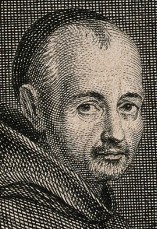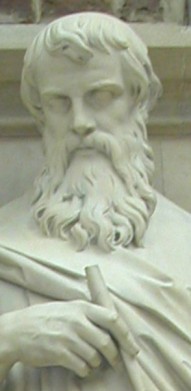Prime Numbers - Advanced Concepts
Prime Numbers
A Prime Number is a whole number above 1 that cannot be made by multiplying other whole numbers.
You might like to read about Prime Numbers and Prime Properties first.
Twin Primes
A pair of prime numbers that differ by 2 (successive odd numbers that are both Prime numbers).
Examples: (3, 5), (5, 7), (11, 13), ...
It is not known whether the set of twin prime numbers ends or not.
Coprimes (Relatively Prime Numbers)
A pair of integers not having any common factors other than 1 or −1.
In other words their greatest common factor is 1 or −1.
Example: 15 and 28 are coprime, because the factors of 15 (1, 3, 5, 15), and the factors of 28 (1, 2, 4, 7, 14, 28) are not in common (except for 1).

Mersenne's Primes
Prime numbers of the form 2n − 1 where n must itself be prime.
3, 7, 31, 127, etc. are Mersenne primes.
Not all such numbers are prime numbers. For example, 2047 (i.e. 211 − 1) is not a prime number. It is divisible by 23 and 89.
Perfect Numbers
Any positive integer that is equal to the sum of its distinct proper factors (factors other than the number itself).
Example: 6 (proper factors: 1, 2, 3) is a Perfect number because 1+2+3=6.
Example: 28 (proper factors: 1, 2, 4, 7, 14) is also a Perfect number, because 1+2+4+7+14=28.
Euclid proved that 2n−1(2n−1) is an even perfect number when 2n−1 is a Mersenne Prime. These are now called Euclid numbers.
Euler proved that all even perfect numbers are of this form for some positive prime number n. Thus, 6, 28 and 496 are perfect and correspond to values of 3, 7, and 31 for 2n−1 in the formula.
This table shows the results for n=1 to 13 which include the first five Perfect numbers:
| n | 2n−1 | 2n−1(2n−1) | Perfect? | Comment |
|---|---|---|---|---|
| 1 | 1 | 1 | No | n is not prime |
| 2 | 3 | 6 | Yes | n is prime, 2n-1 is prime |
| 3 | 7 | 28 | Yes | n is prime, 2n-1 is prime |
| 4 | 15 | 120 | No | n is not prime |
| 5 | 31 | 496 | Yes | n is prime, 2n-1 is prime |
| 6 | 63 | 2016 | No | n is not prime |
| 7 | 127 | 8128 | Yes | n is prime, 2n-1 is prime |
| 8 to 10 | ... | ... | No | not prime |
| 11 | 2047 | 2096128 | No | n is prime, but 2n-1 is not prime |
| 12 | 4095 | 8386560 | No | n is not prime |
| 13 | 8191 | 33550336 | Yes | n is prime, 2n-1 is prime |
Whether there are infinitely many even perfect numbers or any odd perfect numbers remain unsolved questions.
Abundant Numbers
Any positive integer that is less than the sum of its distinct proper factors (factors other than the number itself).
Example: 12 is abundant since its distinct proper factors are 1, 2, 3, 4, and 6 whose sum is 16.
Deficient Numbers
Any positive integer that exceeds the sum of its distinct proper factors.
Any prime number is deficient, because it has only one proper factor: 1.
All numbers of the form 2n are also deficient.
Example: 32 (=25) is a deficient number because the sum of its distinct proper factors is 31 (1+2+4+8+16).
Furthermore, numbers of the form pn are always deficient where p is a prime number and n is a positive integer.
Example: 35 = 243
The factors of 243 other than itself are 81, 27, 9, 3 and 1.
Sum of these factors is 121, which is less than 243.
Similarly, 56=15625, the factors of 15625 are 1, 5, 25, 125, 625, and 3125.
The sum of these is 3906 which is less than 15625.
Amicable Numbers
A pair of integers, each of which is the sum of the distinct proper factors of the other.
Example: 220 and 284 are amicable numbers
Because:
- Factors of 220 (other than itself) are 1, 2, 4, 5, 10, 11, 20, 22, 44, 55, 110.
Sum of these factors = 284 - Factors of 284 (other than itself) are 1, 2, 4, 71, 142.
Sum of these factors = 220.
Wilson's Theorem
If, and only if, n is a prime number then (n − 1)! + 1 is a multiple of n:
(n−1)! ≡ −1 (mod n)
Where the symbol ≡ means modulus

Euclid
Euclid's Proof that the Set of Prime Numbers is Endless
The proof works by showing that if we assume that there is a biggest prime number, then there is a contradiction.
We can number all the primes in ascending order, so that P1 = 2, P2 = 3, P3 = 5 and so on. If we assume that there are just n primes, then the biggest prime will be labelled Pn . Now we can form the number Q by multiplying together all these primes and adding 1, so
Q = (P1 × P2 × P3 × P4... × Pn) + 1
Now we can see that if we divide Q by any of our n primes there is always a remainder of 1, so Q is not divisible by any of the primes.
But we know that all positive integers are either primes or can be decomposed into a product of primes. This means that either Q must be prime or Q must be divisible by primes that are larger than Pn.
Our assumption that Pn is the biggest prime has led us to a contradiction, so this assumption must be false, so there is no biggest prime.
Goldbach's Conjecture
The conjecture that every even number (greater than or equal to 6) can be written as the sum of two odd prime numbers.
Goldbach also conjectured that all odd numbers are the sum of three odd primes: Vinogradov's theorem shows this true of all except possibly finitely many odd numbers.
The study of primes reveals deep patterns in mathematics and unsolved mysteries that continue to inspire mathematicians today.